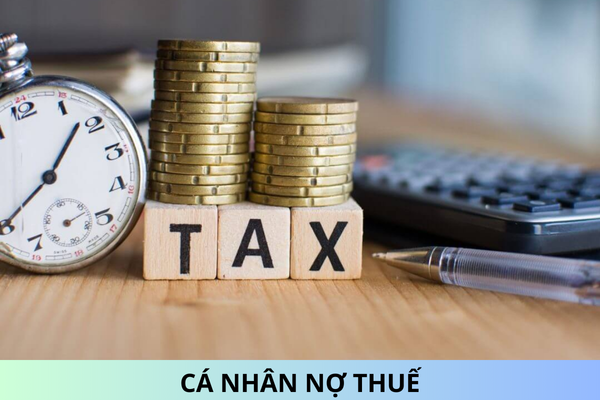The method of deduction of indirect tax under the agreement on double taxation avoidance in Vietnam
What is the method of deduction of indirect tax under the agreement on double taxation avoidance in Vietnam? And which document regulates this issue?
Khuu Thinh (***@gmail.com)

The method of deduction of indirect tax under the agreement on double taxation avoidance in Vietnam (Image from the Internet)
According to the provisions of Article 50 of Circular 205/2013/TT-BTC guiding the implementation of the agreements on double taxation avoidance and prevention of tax evasion with respect to taxes on income and property between Vietnam and other states or territories and in force in Vietnam issued by the Minister of Finance. To be specific:
1. In cases where a resident of Vietnam derives an income from the Contracting State to an Agreement concluded with Vietnam, for which corporate income tax has been paid before it is divided to that resident, if in the Agreement Vietnam commits to apply the method for deduction of indirect tax, in making income tax declaration in Vietnam, such income shall be included in the taxable income in Vietnam in accordance with Vietnam’s current tax law and the indirect tax amount already paid in the Contracting State shall be deducted from the tax amount payable in Vietnam. Nevertheless, in all cases, the deductible tax amount shall not exceed the tax amount payable in Vietnam, which is computed on the income derived from abroad in accordance with Vietnam’s current tax law.
The deductible indirect tax amount is the tax amount already paid by a joint-stock company being a resident of the Contracting State to an Agreement concluded with Vietnam in that Contracting State in the form of corporate income tax before the dividend is divided to a resident of Vietnam, provided that the resident of Vietnam directly controls a minimum percentage (usually 10%) of the voting right in the joint-stock company.
Example 72: Vietnamese company V invests USD 10,000,000 (equivalent to 20% of the equity) in company N of the Russian Federation. In 2010, company N earned an income of USD 100,000 and had to pay tax according to the tax law of the Russian Federation (at the rate of 30%). The after-tax profit of company N was divided to company V according to its share percentage and taxed in the Russian Federation at the rate of 10% (Clause 2.a of Article 10: Dividends, the Vietnam-Russian Federation Agreement). Company V was obliged to pay tax according to Vietnam’s tax law at the current rate (of 25%). In this case, company V’s tax declaration and payment and deduction of the indirect tax in Vietnam shall be as follows:
- The pre-tax profit earned by Vietnamese company V out of the total profit of company N in the Russian Federation is:
USD 100,000 x 20% = USD 20,000
- The enterprise income tax amount already paid by company N in the Russian Federation on the above-said profit of company V according to the Russian Federation’s tax law is:
USD 20,000 x 30% = USD 6,000
- The after-tax dividend divided to company V is:
USD 20,000 – USD 6,000 = USD 14,000
- The tax amount payable by company V in the Russian Federation on its dividend divided under the Vietnam-Russian Federation Agreement is:
USD 14,000 x 10% = USD 1,400
- The total tax amount payable by company V in the Russian Federation (including the direct tax paid by company V on its dividend and the indirect tax paid by company N, which has investment capital of company V, on its income) is:
USD 1,400 + USD 6,000 = USD 7,400
- The tax amount payable by company V in Vietnam according to Vietnam’s current tax law is:
USD 20,000 x 25% = USD 5,000
In this case, company V shall enjoy a maximum deduction of USD 5,000 out of the total of USD 7,400 already paid in the Russian Federation. The difference of USD 2,400 (USD 7,400 - USD 5,000) is not allowed to be deducted from the tax on the domestic income of company V (if any).
2. Notwithstanding the provision above, under which Vietnam shall apply the method of deduction of indirect tax only when it so commits in the Agreements, if, according to Vietnam’s laws, incomes derived from abroad by residents of Vietnam enjoy deduction of indirect tax, this provision is still implemented.
Example 73: Using example 41 above with the assumption that company N’s investment in the Russian Federation is an overseas direct investment project of company V according to Vietnam’s laws, even when the investment percentage of company V accounts for less than 10% of the equity of company N, the methods of deduction of indirect tax shall still be applied (point 21 Article 7 Chapter II of the Finance Ministry’s Circular No. 123/2012/TT-BTC dated 27/2/2012, guiding the implementation of a number of articles of Law on Enterprise Income Tax No.14/2008/QH12 and guidelines on implementation of Decree No.124/2008/ND-CP dated December 11, 2008, Decree No.122/2011/ND-CP dated December 27, 2011 of the Government detailing the implementation of a number of articles of Law on Enterprise Income Tax, though it is not so prescribed in the Vietnam-Russian Federation Agreement (Clause 2 of Article 23: Methods for elimination of double taxation).
Notwithstanding the above-said provisions on methods for elimination of double taxation, if, according to the provisions of an Agreement, incomes derived from abroad by residents of Vietnam are exempt from tax in Vietnam, these incomes shall be exempt from tax and the tax amounts already paid overseas shall not be deducted (meaning that it shall be taxed only once and it is not necessary to apply methods for elimination of double taxation). Example scholarships of foreign students and apprentices during the time of their study in Vietnam (Section 15: Incomes of students and apprentices, Chapter II of this Circular)
The above-said provisions on methods for elimination of double taxation are included in the Article Methods for elimination of double taxation (usually Article 23) of the Agreements.
Above is the content of regulations on method of deduction of indirect tax under the agreement on double taxation avoidance. For more detailed information, you can refer to Circular 205/2013/TT-BTC.
Best regards!










